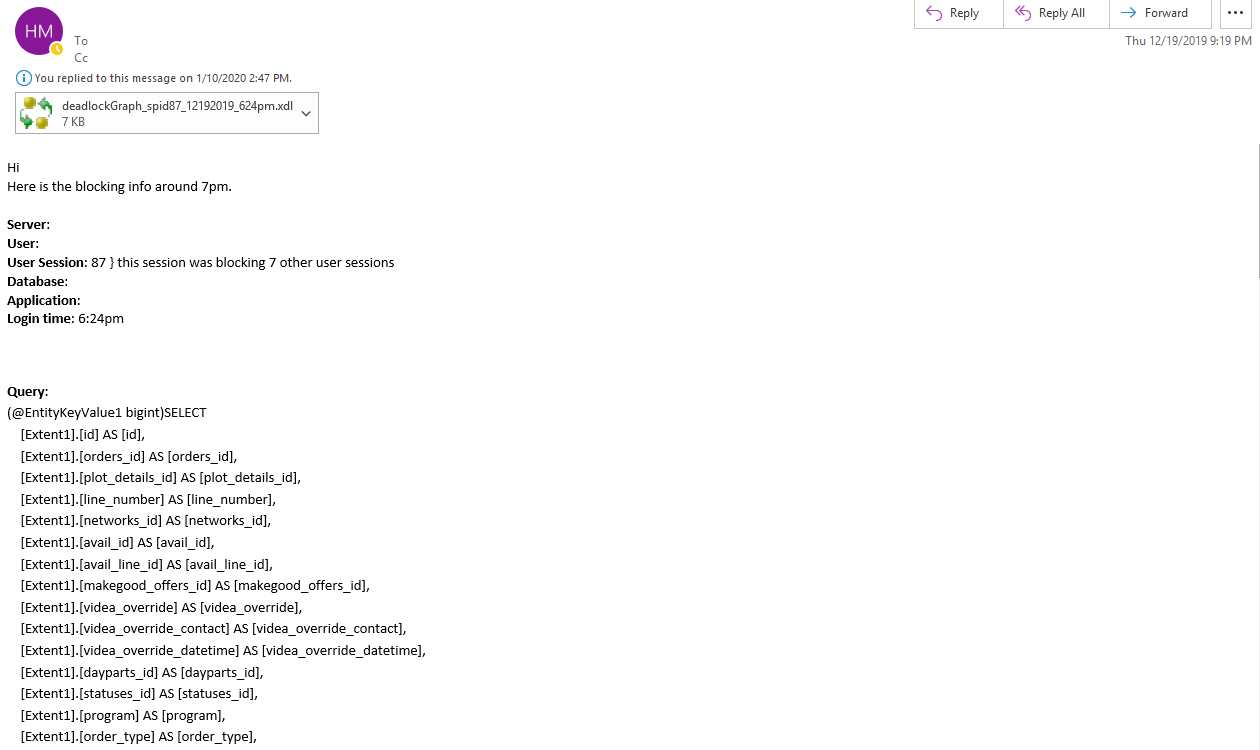Hi guys!
Today's post is on exporting a deadlock graph with Idera Diagnostic Manager.
Idera Diagnostic Manager is a great tool to track performance issues in your SQL environment.
Let's get started.
Open the application:
Select the server:
Select the Sessions tab:
Select the Blocking option on the Sessions tab:
Select the History Browser :
Look for the culprit with a critical status of the Historical snapshots area in the bottom right:
a)
b)
c)
View session details for the culprit (session) that is causing all the issues:
a)
b) You can gather all the details to email to effected teams.
Go back to the session blocking view:
Under Deadlock Reports, double click the most recent deadlock and 'Export XDL' (the deadlock graph) to your download folder on the server.
b) Name your deadlock graph like this:
c) Hit 'Done' to close out the deadlock window.
Locate your deadlock file and copy it to your desktop (ctrl c + ctrl v).
Finally, email effected teams the deadlock information.
If you have any questions related to this post, please put them below.
Thank you and Happy reading,
-marshé hutchinson
#learnSQLwithme
Today's post is on exporting a deadlock graph with Idera Diagnostic Manager.
Idera Diagnostic Manager is a great tool to track performance issues in your SQL environment.
Let's get started.
Open the application:
Select the server:
Select the Sessions tab:
Select the Blocking option on the Sessions tab:
Select the History Browser :
Look for the culprit with a critical status of the Historical snapshots area in the bottom right:
a)
b)
c)
View session details for the culprit (session) that is causing all the issues:
a)
b) You can gather all the details to email to effected teams.
Go back to the session blocking view:
Under Deadlock Reports, double click the most recent deadlock and 'Export XDL' (the deadlock graph) to your download folder on the server.
b) Name your deadlock graph like this:
c) Hit 'Done' to close out the deadlock window.
Locate your deadlock file and copy it to your desktop (ctrl c + ctrl v).
Finally, email effected teams the deadlock information.
If you have any questions related to this post, please put them below.
Thank you and Happy reading,
-marshé hutchinson
#learnSQLwithme
















Comments
Post a Comment